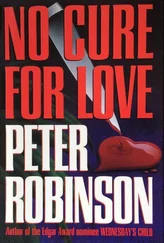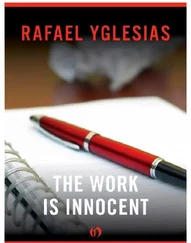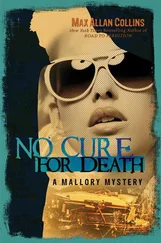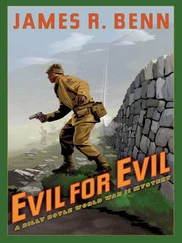The other two men appeared at ten minutes before seven. They are unimportant to an understanding of Copley except in one respect. They were both ten years younger than Stick and his equals in business, one, the head of a software company, the other, a merger and acquisitions man at an investment banking firm. That surprised me. I expected his tennis partners would be the modern equivalent of courtiers, men motivated to lose to him, lawyers who worked for him, or perhaps a less successful friend. The head of the software company wore a skintight sky blue brace on his left knee. Copley introduced me and the software man said, “So you’re the ringer, huh? Stick claims you haven’t played in a while.”
“He hasn’t,” Stick said calmly, no rancor. “Not since you were in college, I bet.”
“Not since high school,” I said.
“Great,” the mergers and acquisitions man said to Copley. “He’s your partner.”
“What’s wrong with your knee?” I asked the software man.
He blanched at the question and answered with his head down. “It’s okay. I sprained it skiing last winter. Some jerk smashed into me. This is just a precaution.”
We warmed them up. I hit my awkward self-conscious topspin to them, saving my underspin for the game, and kept my eyes on the side-to-side movement of Mr. Software. When he tried to push off quickly on the injured knee, there was a delay. He was stubborn, too. Although we were merely rallying, if I pulled a ball wide to his wounded side, he chased it. Mr. M&A seemed obsessed with beating Copley, clumsily trying to psyche him out. “Oh, you’re hitting ’em too hard for me!” he called whenever Copley didn’t whack the ball with every ounce of his strength. During one lull of ball gathering, he commented, “Are you doing something new with that backhand, Stick? It looks great.”
“Nothing,” Stick answered with a smile, “and you know it.”
I had a pleasant surprise when we practiced our serves. Here the modern racquet helped me. The extra power meant that my softer, more accurate second serve had good pace, whereas their serves seemed no faster than what I remembered from opponents of my youth. Indeed, with the new power, I could place serves wide or down the middle and retain speed, a combination that wasn’t possible in the old days for me. Stick, who had adopted a resigned air since our warm-up, was impressed. Hope returning, he whispered, as we moved to our positions to start the game, “You’ve got a good serve.”
“We’re going to win,” I told him.
“They’re good,” he said. “Better than you.”
“I’m smarter,” I answered.
The flaw in playing this gambit with Stick was that I had to come through and I wasn’t convinced I could. I needed a lot more practice, and perhaps more talent, to defeat these men. Besides, my partner Copley wasn’t superior to our opponents. In fact, I felt he was slightly inferior. Mr. Software had a lot of variety to his shots and placed them well, relying less on raw power. His consistency and the fact that he played the net superbly are both keys to winning at doubles. Copley was aggressive at net, I discovered, but rarely hit a clean winning volley, since he refused to try for angles, insisting on trying to bang them past our opponents, which he failed at more often than not.
For the first four games, they held their two serves easily, smashing my feeble returns, and outhitting Stick, anticipating his passing shots as if they could read his swing. However, my height and reach helped me. Playing net while Copley served, I startled them with both my wingspan and my leap. Mr. M&A tried one lob. After I put it away, with an awkward but effective jump, he said, “That’s the last time I try to go over your head.” Also, my training with the more finesse game of wood helped at net. I had no trouble hitting drop volleys, or spinning them out of court. We held Stick’s serve easily. As for the game on my serve, I was able, unlike with my ground strokes, to overpower them.
We were tied at two games all. It was soon apparent that, unfortunately, our opponents had been merely feeling us out. Beginning with the fifth game, they kept the ball away from me when I was at net and consistently hit to me when I was back, confident that my topspin ground strokes would be weak. They held their serves at love and broke Copley easily, partly because he stubbornly tried too hard to carry us by himself, and ended up overhitting. He also made mistakes while I was serving, driving what should have been two put-away volleys long. But we held my serve. We were now down five games to three, in immediate danger of losing the set.
Before receiving Mr. Software’s first serve of the ninth game, I conferred with Copley in the backcourt. I whispered, “I’m going to hit with sidespin and underspin. I want to move him around on that knee.”
“You think it’s bothering him?”
“I think he won’t protect it. Do you care if I test it?”
Stick frowned, as if I had insulted him. “Of course not.”
Mr. Software had found my high, weak returns so easy to volley that he had been coming in behind his serve each time. He opened this game with a hard one to my backhand and followed it in. I replied with an abbreviated sidespin stroke, aiming to hit it at his feet and out wide. When he saw the low arc of my ball, he tried to stop. He tried to stop on the braced knee and it buckled as my shot passed him for a winner. He immediately stood, raising his knee off the ground. If I had blinked, I might not have noticed the collapse.
I rushed forward and stammered, “You — you okay?”
“Yeah, I’m okay. I’ve been passed before,” he grumbled and rolled his eyes at his partner to highlight my foolishness.
When he moved to serve the second point to Stick, I didn’t position myself at the net, instead playing back. This could be taken as an insult to Copley’s ability to return Mr. Software’s serve. And that’s how Stick took it. “You should be up,” he said.
“No I shouldn’t,” I answered insolently.
“Ready boys?” Mr. Software asked sarcastically.
Copley whacked the return hard. He made a good one, driving it across court to Software. Since I was back, Software took advantage. He hit a deep topspin shot to me. Although a groundstroke was called for, I floated a high lob over M&A, to force Software to have to run to the other side. He got to it easily, returning it to me, and I continued this old-womanish tactic, mooning balls over M&A each time, so that Mr. Software had to keep shifting laterally. He was stubborn and persisted in returning them to me. The play slowed down so much that M&A had the leisure to complain, “Cut it out, girls.”
Finally, I hit my first underspin forehand, without much pace, almost a drop shot, about twelve feet in front of Software. He couldn’t push off that knee fast enough to have a chance for it, but he tried anyway, and again his foot came down hard as he tried to reach, the knee buckling. This time he stayed down for a moment or two. He covered it by banging his racquet on the clay, as if the pose were frustration rather than physical weakness.
Copley was shrewd, as I expected. From then on, he stopped trying, for the most part, to hit winners and resorted to lobs or short balls at Mr. Software, keeping him on the run. Software lunged at balls as he tired, in pain I suspected, and made errors. We ran off four games quickly and won the set, seven to five. Not before, however, there was another clue to Mr. Software’s immaturity about his infirmity. On the final and decisive point, although he had no hope of getting it, he recklessly chased a volley I had spun toward the alley into the netting that separates Court One and Court Two. He got tangled in the mesh, the right foot twisting, and he fell hard. We all rushed over to help. He brushed us off angrily, and insisted his ankle was okay. In fact, he was limping, wounded now in his left knee and his right foot. I suggested we quit for the night.
Читать дальше












